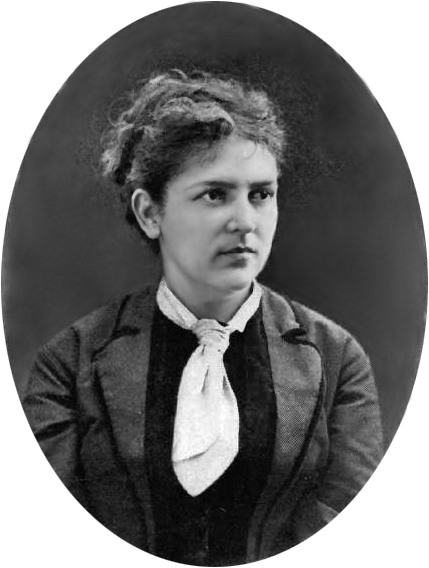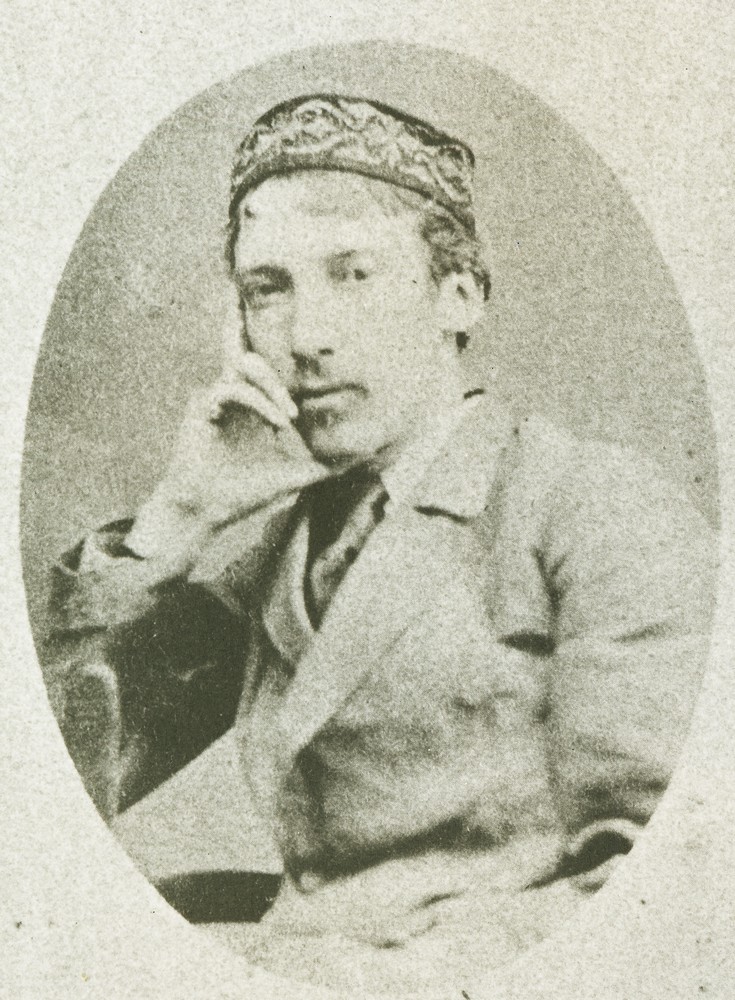Posts Tagged ‘fanny osbourne’
Louis, Fanny and ‘Charles of Orleans’
When Stevenson first met Fanny Osbourne and fell in love he accepted an addition she suggested to his latest essay. Her contribution was first noted when preparing the essay for the upcoming New Edinburgh Edition of Stevenson’s Familiar Studies of Men and Books.
On 30 July 1876 Stevenson reported that his essay on ‘Charles of Orleans’ was finished and had been sent off to the Cornhill. The following month he left Edinburgh for London and then Antwerp where he was to begin his Inland Voyage river and canal journey on 25 August. In a letter to Colvin written just before leaving Edinburgh he still hadn’t heard from the Cornhill about the essay (Letters 2: 178, 181).
In the same letter to Colvin he said ‘I have an ultimate purpose of reaching Fontainebleau by water’, but he in fact ended at Pontoise, about about 17 km via the river Oise to the Seine below Paris. On 13 or 14 September he wrote to his mother from Pontoise mentioning ‘a bold, desperado sort of post card from my father; anent a proof of mine; which he has carefully violated as usual’ (Letters 2: 190). This can only refer to the ‘Charles of Orleans’ proofs. The same incident is alluded to at the end of An Inland Voyage, where he says a packet of letters picked up in Compiègne ended the holiday feeling and at their next stop, ‘a letter at Pontoise decided us’, and brought the trip to an end (Tusitala 17: 88, 110).
It is not clear whether it had been agreed that Thomas Stevenson would read the proofs when they arrived, or whether he took it upon himself to open the envelope: certainly, Stevenson did not welcome this interference, and two-and-a-half years later made sure his father did not see the proofs of Travels with a Donkey (Maixner: 64).
*
After Pontoise Stevenson and Simpson continued by rail to Paris and Grez, where they presumably arrived around 16 September—along with the two canoes (Lloyd Osbourne remembers them there). And there at the artist’s inn of Chez Chevillon, Stevenson met his future wife Fanny Osbourne. We have Lloyd Osbourne’s later recollection of Stevenson arriving, vaulting though the open window from the street and being greeted with delight by the company around the dinner table. Louis was attracted to Fanny first; Fanny, we know from her letters, was attracted to Bob Stevenson, but at a certain point he told her that his cousin was more worthy of her attention. (All this un-Victorian fluidity and freedom of relationships must have seemed like a new world to Louis.)
Anyway, they fell in love, ‘step for step, with a fluttered consciousness, like a pair of children venturing together into a dark room’, as Stevenson puts it in ‘Falling in Love’. Lloyd Osbourne remembers how Stevenson and his mother ‘would sit and talk interminably on either side of the dining-room stove while everybody else was out and busy, under vast white umbrellas, in the fields’ (Tusitala 17: xi).
*
One day, Stevenson must have given Fanny those proofs of his latest essay, ‘Charles of Orleans’ to read. The text published in the Cornhill in December of that year contains the following passage:
The reader will remember how Villon’s mother conceived of heaven and hell and took all her scanty stock of theology from the stained glass that threw its light upon her as she prayed. And there is scarcely a detail of external effect in the chronicles and romances of the time, but might have been borrowed at second hand from a piece of tapestry. It was a stage in the history of mankind which we may see paralleled, to some extent, in the first infant school, where the representations of lions and elephants alternate round the wall with moral verses and trite presentments of the lesser virtues. So that to live in a house of many pictures was tantamount, for the time, to a liberal education in itself.
After reading the essay, Fanny suggested the parallel between knowledge conveyed through images in the Middle Ages and the images in the classroom of the infant school, and Stevenson (always interested in parallels between primitive and infant psychology) must have inserted it on the proofs.
We know this because when the essay was collected in Familiar Studies in 1882, Stevenson, replying to a letter from Alexander Japp, said, ‘The elephant was my wife’s: so she is proportionately elate you should have have picked it out for praise’ (Letters 3: 310).
Fanny Stevenson’s short stories
Sarah Ames, research assistant for New Arabian Nights: The Dynamiter, has this request for anyone out there interested in Fanny Stevenson:
Work is currently well underway for the EdRLS edition of More New Arabian Nights: The Dynamiter, which is being edited by John Lyon (University of Bristol). This was Stevenson’s only prose narrative collaboration with Fanny Van de Grift Stevenson (they also collaborated on a play, “The Hanging Judge”), and the Introduction of our edition will naturally examine the nature of that collaboration, and the question of Fanny’s contribution to the text. In order to do this we will be comparing samples of Fanny Stevenson’s writings with the text of The Dynamiter, to see if there are any similarities between the language in the texts, such as distinctive choices of words and sentence constructions.
With this in mind, we are currently working on digitizing Fanny Stevenson’s published short stories, with the aim of publishing them certainly as an on-line resource, and possibly as an appendix to the edition. Tracking these down, however, has been difficult, and has involved searching for a number of ‘different’ authors: ‘Fanny Stevenson’; ‘Fanny Van de Grift’; ‘Fanny Van de Grift Stevenson’ (with ‘Vandegrift’ variants); ‘Fanny Osbourne’, ‘F. M. Osbourne’; ‘Mrs Robert Louis Stevenson’…. With the help of Roger Swearingen and Richard Dury, our list now stands as follows:
‘Too Many Birthdays’ (St. Nicholas, 1878)
‘Chy Lung, The Chinese Fisherman’ (St. Nicholas, 1880)
‘The Warlock’s Shadow’ (Belgravia, 1886)
‘Miss Pringle’s Neighbors’ (Scribner’s Magazine, 1887)
‘The Nixie’ (Scribner’s Magazine, 1888)
‘The Half-White’ (Scribner’s Magazine, 1891)
‘Under Sentence of the Law: The Story of a Dog’ (McClure’s, 1893)
‘Anne’ (Scribner’s Magazine, 1899)So far, we have digitized about half of these; we are still looking for scanned copies of: ‘Too Many Birthdays’, ‘The Warlock’s Shadow’ and ‘Chy Lung’.
Any help with our hunt for Fanny Stevenson’s texts would be gratefully received: does anyone possess scanned copies or scannable photocopies (or original magazines) of the two texts mentioned above? And does anyone know of any other of her short stories, besides the ones listed above, which were published?



